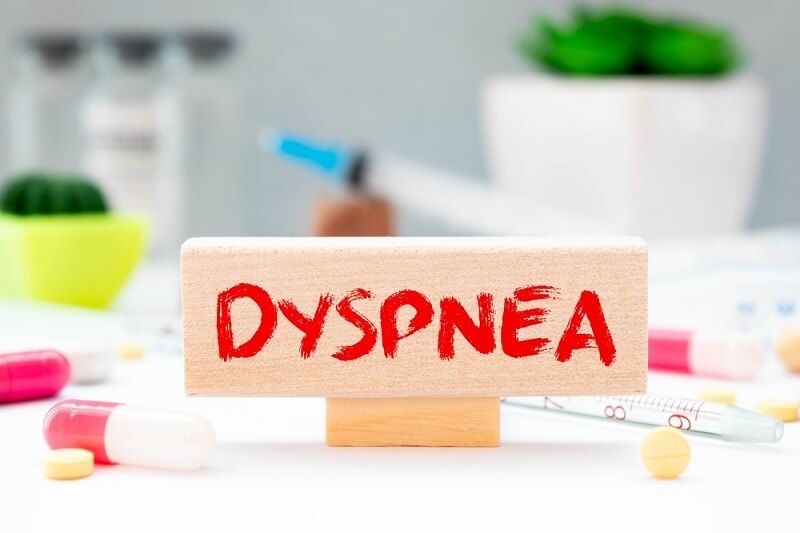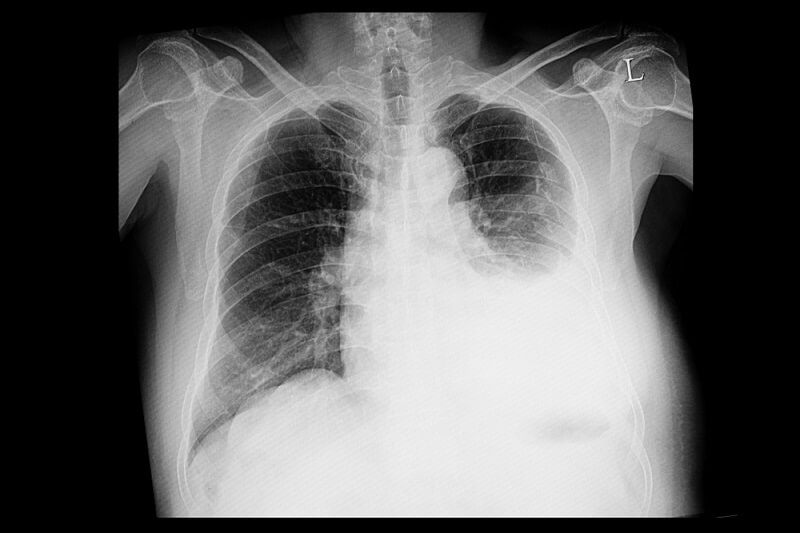Understanding Dyspnea: Causes, Symptoms, And Treatment

Dyspnea, the sensation of labored breathing commonly known as "shortness of breath," is a symptom that can potentially disrupt lives. It strikes suddenly in moments of crisis, subtly creeps into daily routines, and varies in intensity from person to person. Beyond the struggle to inhale and exhale, dyspnea often carries a weight of anxiety and uncertainty. Lets take our steps into understanding dyspnea is the first step in regaining control over your breath and your life.
What is Dyspnea?
Dyspnea is a complicated medical term that denotes the sensation of difficult or labored breathing. It is subjective, meaning it varies from person to person and can be triggered by various medical conditions or situations. It's essential to recognize that dyspnea is not a disease but a symptom of an underlying problem. Identifying the root cause is crucial for appropriate management.
Dyspnea vs. Shortness of Breath
While people often use the terms "dyspnea" and "shortness of breath" interchangeably, there is a subtle difference between the two. Dyspnea is a more comprehensive term encompassing the feeling of breathlessness, whereas shortness of breath typically indicates a specific sensation of not getting enough air. This distinction can help healthcare providers narrow the underlying cause in a clinical context.
Acute and Chronic Dyspnea
Dyspnea can be categorized into two primary types:
1. Acute Dyspnea occurs suddenly and is often associated with medical emergencies such as heart attacks, severe allergic reactions, or pulmonary embolisms. Immediate medical attention is usually required in these cases.
2. Chronic Dyspnea: Chronic dyspnea develops gradually and persists over an extended period. It can be a symptom of chronic conditions like asthma, chronic obstructive pulmonary disease (COPD), interstitial lung disease, or congestive heart failure. Management of chronic dyspnea often involves long-term treatment and lifestyle adjustments.
Signs and Symptoms of Dyspnea

- Rapid, shallow breathing
- Chest tightness
- Wheezing
- Coughing
- Use of accessory muscles (neck, shoulder, and chest) during breathing,
- Increased heart rate
- Anxiety or panic
Considering the context and accompanying symptoms when assessing dyspnea is essential, as these factors can provide valuable clues to the underlying cause.
Causes of Dyspnea
- Respiratory Conditions: Dyspnea is frequently associated with asthma, chronic bronchitis, COPD, pneumonia, and interstitial lung disease. These conditions can obstruct airways or impair lung function.
- Cardiovascular Conditions: The heart and circulatory system deliver oxygen to tissues. Conditions such as heart failure, coronary artery disease, and arrhythmias can disrupt this process, leading to dyspnea.
- Anemia: Anemia is a condition characterized by a reduced ability of the blood to carry oxygen. When there is insufficient oxygen in the blood, the body may respond with dyspnea.
- Obesity: Excess body weight can place additional stress on the respiratory system, making breathing more challenging. Obesity-related dyspnea often improves with weight loss and lifestyle changes.
- Allergic Reactions: In some cases, anaphylactic reactions to allergens can cause acute dyspnea, along with other severe symptoms like swelling, hives, and a drop in blood pressure.
- Psychological Factors: Anxiety and panic attacks can lead to a feeling of breathlessness. Managing stress and seeking mental health support may help alleviate psychogenic dyspnea.
- Environmental Factors: Exposure to pollutants, allergens, or high altitudes can induce or exacerbate dyspnea. Ensuring a clean and safe environment is crucial for those prone to environmental triggers.
Diagnosis for Dyspnea

Medical History and Symptom Assessment: A detailed history of the symptoms, their onset, and any factors exacerbating or alleviating them.
- Physical Examination: A healthcare provider will perform a physical exam to look for signs such as rapid breathing, wheezing, or signs of heart problems.
- Lung Function Tests: Spirometry measures lung function and can identify disorders like asthma or COPD.
- Imaging Studies: Chest X-rays and CT scans can provide insights into the state of the lungs and any abnormalities.
- Blood Tests: Blood samples can reveal information about oxygen levels and assess for conditions like anemia.
- Electrocardiogram (ECG or EKG): An ECG records the heart's electrical activity, helping identify cardiac-related issues.
- Echocardiography: This heart ultrasound can visualize the heart's structure and function, pinpointing heart-related causes of dyspnea.
The choice of diagnostic tests depends on the suspected underlying cause and may vary from case to case.
How is Dyspnea Treated?
- Medications: In respiratory conditions, medicines such as inhalers and corticosteroids can be prescribed. These drugs help to dilate airways, reduce inflammation, and relieve symptoms. For heart-related causes, remedies may include diuretics to reduce fluid buildup, beta-blockers to control heart rate, or antiarrhythmic drugs for heart rhythm disorders.
- Oxygen Therapy: For individuals with low blood oxygen levels, supplemental oxygen can provide relief and improve the body's oxygen supply.
- Physical Therapy: People with chronic respiratory conditions may benefit from pulmonary rehabilitation. This comprehensive program includes exercise, education, and counseling to improve lung function and overall health. Respiratory therapists can teach breathing techniques that enhance lung capacity.
- Lifestyle Modifications: Lifestyle adjustments are crucial for managing dyspnea in the long term. Smoking cessation is paramount for anyone with respiratory issues, as is weight loss for individuals with obesity-related dyspnea. Avoiding triggers such as allergens and environmental pollutants can also alleviate symptoms.
- Surgery: In some instances, surgical interventions may be necessary to correct structural issues in the heart or lungs. Procedures like angioplasty, stent placement, or valve repair/replacement can improve cardiac function.
It's worth noting that addressing psychological factors that contribute to dyspnea, such as anxiety or panic disorder, often involves psychotherapy, medication, or a combination of both.
Prevention of Dyspnea
- Healthy Lifestyle: Following a balanced diet and regular exercise can help prevent obesity and improve cardiovascular health. Training can also enhance lung function.
- Avoid Smoking: Smoking is a significant risk factor for respiratory conditions and heart disease. Quitting smoking significantly reduces the risk of developing dyspnea.
- Environmental Awareness: To prevent environmental causes of dyspnea, be mindful of allergens, pollutants, and irritants in your surroundings. Minimizing exposure can reduce the risk of developing respiratory symptoms.
- Vaccination: Staying up to date with vaccinations, particularly the flu and pneumonia vaccines, can help prevent respiratory infections that can lead to dyspnea.
Regular check-ups with a healthcare provider can aid in the early detection and management of conditions that may lead to dyspnea.
When to Call the Doctor
- Sudden and Severe Dyspnea: If you experience sudden and severe dyspnea, especially if it is accompanied by chest pain, fainting, or confusion, call for emergency medical assistance immediately. These symptoms may indicate a life-threatening condition like a heart attack or pulmonary embolism.
- Chronic Dyspnea: If you have ongoing or worsening dyspnea that does not improve with rest or at-home interventions, contact your healthcare provider. Chronic dyspnea may indicate an underlying health issue that requires attention.
- Dyspnea with Other Concerning Symptoms: If your dyspnea is accompanied by symptoms like swelling of the face or extremities, severe coughing, high fever, or confusion, seek medical evaluation. These additional symptoms may provide valuable clues to the underlying cause.
Conclusion
Dyspnea is a significant and often distressing symptom caused by various underlying conditions. Proper diagnosis and treatment are essential for managing this condition and improving overall quality of life. If you or someone you know is experiencing dyspnea, don't hesitate to contact a healthcare professional for guidance, support, and the best possible care.
This content was created by AI
-1717753922-r.jpg)